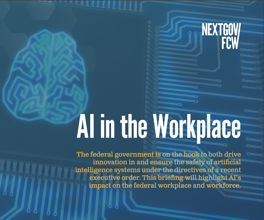Blades open new markets
Companies that don't make blade servers are beginning to develop products to complement them. Oracle Corp., for example, has a database product called 10g that is optimized for grid computing, a form of clustering.
Grids work on problems that are chunkable, or divisible into small tasks that individual processors can perform, said Timothy Hoechst, senior vice president of technology in Oracle's Government, Education and Healthcare Division.
By contrast, "our problem—running a database—is not chunkable," he said. "Modern databases are all about concurrency, not about separation."
Oracle developers have been dealing with clusters for a while, Hoechst said. "What we've been focusing on recently is taking that next step so [a user has] not two big Unix machines operating as a cluster, but racks of blade servers acting as a grid," he said.
"There is a level of convenience that comes with blade servers," Hoechst added. "Blade servers give us the ability to have in a single rack lots of computers that are working independently but collectively on a problem. They take up less space; they use less power."
The management capabilities that Oracle 10g offers are essential for controlling ever-growing implementations, said Larry Callant, a research associate at the Environmental Protection Agency.
Callant handles digital images and geographic information for the Environmental Protection Agency's Superfund program, and he is leading a project to develop a service that will provide the data quickly to first responders.
Agency officials will be implementing blade servers soon to move the massive task off of desktop workstations' development environment.
"The blade servers are going to give us a faster response and enable us to handle data much better," Callant said. "The con is price, and you have to have a location that's going to set it up. We're going to need a lot of storage."
NEXT STORY: DOD hires ManTech for telecom work




